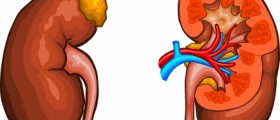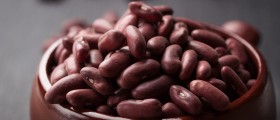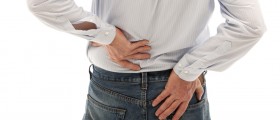Hydronephrosis is a dilation of the kidney with urine, caused by backward pressure on the kidney due to an obstructed urine flow. It can prove to be a source of excruciating pain, usually in the area between the hip and the ribs. In the case of the condition appearing more gradually, patients may experience mild symptoms, if any at all.
The pressure of urine flowing out of the kidney is quite low. If it becomes obstructed it tends to back up to the point when it reaches the renal pelvis. This greatly increases the pressure, which in turn causes damage to the kidney and may result in the complete loss of its function. The risk of infections also rises and kidney stones are even more likely to appear. All this can result in total kidney failure.

- The cause of urinary obstruction can be broadly classified as intrinsic and extrinsic compression. Causes of intrinsic obstruction include renal stones, malignancy, ureteropelvic junction stenosis, ureteral strictures from prior inflammation, renal cysts, posterior urethral valves, benign prostatic hyperplasia, and neurogenic bladder, etc. Causes of extrinsic compression include pregnancy, peripelvic cysts, retrocaval ureter, malignancy, trauma, retroperitoneal fibrosis, and prostate abscess, etc.
- Yearly, of the estimated 6% total new births worldwide (8 million) born with serious birth defects, as many as 1% of the newborns have congenital defects of kidney and urinary tract.
- Hydronephrosis is present in a growing number of neonates and infants, most commonly due to ureteropelvic junction obstruction. This is found in up to 1 in 100 live births in the United States and is treated conservatively.
- Approximately 600,000 adults in the US suffer kidney stones per year, affecting nearly 1 in 11 persons. As per the National Health and Nutrition Examination Survey (NHANES), the prevalence of kidney stones is 8.8% in the United States. Among men, it is 10.6% compared to 7.1% in women. White race, obesity, and diabetes are strongly associated with kidney stones.
- Hydronephrosis is commonly seen in up to 80% of pregnant women. Mechanical compression of the ureters due to the enlarging uterus and the effects of progesterone are thought to be the etiology. It is mostly identified in the second trimester and may persist up to 6 to 12 weeks postpartum. Ureteral stenting is a treatment of choice if patients develop pain and renal failure.
- Adults with acute urinary outflow obstruction typically present with constant dull pain thought to be the result of stretching of the renal capsule, with intermittent episodes of severe pain due to genitourinary peristalsis transiently increasing the pressure. Many patients report nausea and vomiting, as well as dysuria or urinary urgency.
- Urinary tract infection is the most common complication of hydronephrosis. It can further lead to pyelonephritis, infection of the kidney itself. When a chronic obstruction is relieved, patients may develop post obstructive diuresis.
Causes
Hydronephrosis is commonly caused by a number of conditions. Various structural abnormalities can obstruct urine flow in multiple ways. Kidney stones or blood clots in the renal pelvis can also cause this kind of obstruction. Bands of fibrous tissue, a tumor, or an abnormal vein and artery growth may be responsible for a compression of the ureter, resulting in identical problems.
During pregnancy, uterus enlargement may cause ureters to compress, inducing hydronephrosis in both kidneys. This can be further aggravated by hormonal changes. However, this condition should end with the completion of the pregnancy itself. Only rarely does the ailment mildly continue afterward.
Symptoms
Symptoms are very dependent on various causes. If the obstruction appeared suddenly, it will often present with renal colic production. this should become apparent through excruciating pains in the respective flank. A slower progression may present no recognizable symptoms. Vague intestinal symptoms can also become apparent. These would include nausea, vomiting, and abdominal pains.
Diagnosis
Early diagnosis of the condition is important so as to avoid permanent kidney damage, so any of the symptoms mentioned should be reported right away.
Prognosis
Permanent damage is expected only in cases where both kidneys are obstructed for a considerable amount of time (two weeks or more).
Treatment
Treatment efforts are mostly directed at removing the cause of obstruction. These can include drugs, lithotripsy, or endoscopic surgery, depending on the said cause. One of the last resorts is to drain the urinary tract. This, however, should be used only if there is no way to swiftly relieve the obstruction, or if the kidney(s) are in imminent danger.
An infection or severe pains are good examples of those. Complications may include tube displacement, infections, or discomfort.
- www.nhs.uk/conditions/hydronephrosis/
- medlineplus.gov/ency/article/000506.htm
- Photo courtesy of James Heilman, MD by Wikimedia Commons: commons.wikimedia.org/wiki/File:Hydronephrosis.png

















Your thoughts on this
Loading...